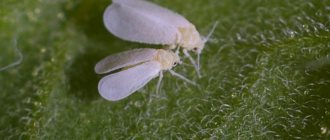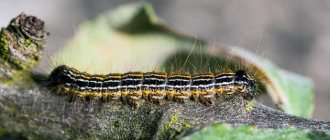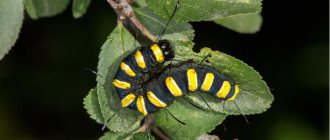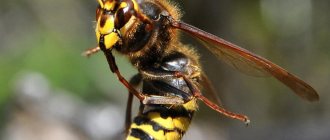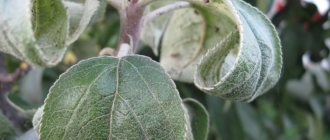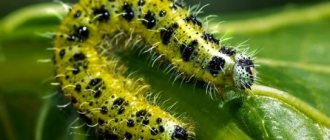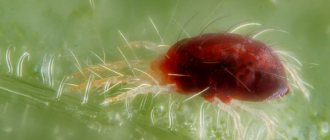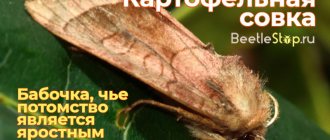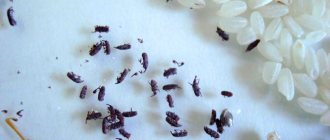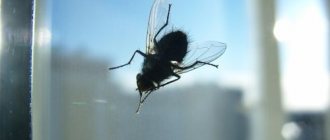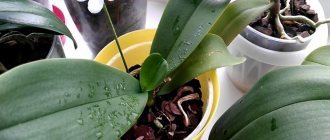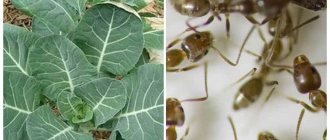Home / Pests and diseases
Back
Published: 06/09/2019
0
Rate this post
Caterpillars appear when butterflies lay eggs. These small caterpillars are very voracious by nature. In addition, they are unpretentious to environmental conditions. Caterpillars eat the leaves, fruits and flowers of apple trees with equal success, no matter what the weather is, and they do this from early spring to late autumn. If you don't fight them, the worms will completely destroy the apple tree.
In most cases, they are easy to detect; to do this, carefully inspect the tree. Almost all types of caterpillars are large enough to be noticed.
In our area, the most common species found are ermine moths, moths, ringed and gypsy moths, and hawthorn. The most noticeable are the silkworm larvae. The length of their shaggy body reaches seven centimeters in length.
Hawthorn looks much more modest. This black caterpillar is smooth and very small. It's harder to notice.
Such an insidious parasite as a moth larva can generally be detected only by eating leaves, the larvae are so small. If you do not start an urgent fight against the caterpillars on the apple tree, then these “invisible insects” will very quickly multiply and completely deprive the tree of foliage, flowers and ovary.
- 1 Consequences from the pest
- 2 How to get rid of caterpillars on an apple tree
- 3 How to deal with codling moth
- 4 How to treat an apple tree against leaf roller caterpillars
- 5 Traditional methods of struggle
- 6 Chemicals
- 7 Prevention
Consequences from the pest
Initially, the caterpillars hide under the bark of apple trees. At this time, it is difficult to detect them. Meanwhile, they carry out their harmful activities under the bark. Caterpillars are able to gnaw channels in a tree trunk, which contributes to the appearance of fungal diseases, which are much more dangerous for apple trees.
The caterpillars cause the greatest damage when gardens are in flower. They eat buds and ovaries. Luckily, they are easiest to spot on flowers. Apple blossoms are most readily consumed by leaf rollers, codling moths and hawthorns.
It is worth saying that the leaf roller caterpillar also affects gooseberries, pears, currants and garden flowers.
How to get rid of caterpillars on an apple tree
In order to successfully fight black and any other caterpillars on an apple tree, you need to take preventive actions and determine what kind of pest is on the tree. If you find gray caterpillars, it means they are hawthorns. If a cobweb has formed on the foliage or branches, this indicates that an apple moth has appeared in the crown of the tree. The presence of leaf rollers on an apple tree causes the leaves to curl.
Preventive actions include spring whitewashing of trunks with lime mortar, timely pruning of branches, proper and regular fertilizing and, of course, watering on dry days. This work should be carried out regularly from early spring to late autumn, then caterpillars will not appear on the leaves of the apple tree.
Spider mite
This representative of the genus of arachnids is, in essence, not a spider, although it weaves its webs in the form of translucent cloudy fabrics, interspersed with thousands, thousands of small dots - eggs of the pest, which itself does not exceed 1 mm.
For you personally, the spider mite is not dangerous in any way, but for all representatives of the flora, including decorative ones, it is a real destroyer! Not only does he himself suck the juice from under the thin bark of young twigs, his numerous offspring, barely hatching from their mini-eggs, immediately bite and are absorbed into the bark, leaves, flowers, fruit ovaries and begin to actively feast.
Spider mites reproduce throughout the entire “summer season”: from early spring to late autumn and are capable of completely destroying your garden, vegetable garden and flower beds during this period. Unhappy plants, entangled in shrouds made of such a web (surely many have seen photos of such lesions), curl their leaves, droop and eventually dry out.
How to fight the codling moth
The codling moth is very common in our gardens. Its pupae spend the winter in the soil near the trunks of apple trees. With the onset of spring, butterflies emerge from the pupae and lay eggs on the leaves of the apple tree. It is difficult to see them; they are extremely small. In early summer, tiny worms hatch from these eggs. These are the caterpillars of the moth. They feed on the core of the fruit, rendering it unusable. Under their influence, unripe apples fall. How to treat apple trees in June?
To successfully combat the pest, first of all, collect all fallen apples and destroy them. Adhesive catching belts, which are attached to apple tree trunks below the very first branch, have proven to be very effective.
After the apple tree has finished flowering, treat it with insecticidal preparations. This is a solution of chlorophos (0.2%) or karbofos (0.3%). Experienced gardeners first spray one tree and watch it for a day. If nothing bad happened to the apple tree, then the remaining trees are treated.
How to treat an apple tree against leaf roller caterpillars
Green caterpillars emerge from the eggs of leaf roller butterflies. They love apple buds when they are still young, then they switch to flowers, and then to leaves. The waste products of leaf roller caterpillars look like cobwebs. Under its influence, the leaves curl into tubes, inside which the caterpillar lives.
How to deal with apple tree pests? Mechanically. Tear off all curled leaves and burn. If in the spring there are too many of these pests on the tree, then before flowering, spray the apple tree with a 3% solution of nitrafen. Repeated treatment can be done no earlier than two weeks later.
Apple (pear) psyllid
This winged “snake” itself shyly feeds on pollen, but its offspring - larval caterpillars suck plant juices from flowers, leaves, buds and young bark.
When feeding, the caterpillars secrete specific sticky excrement that resembles cotton candy in appearance. This “cotton wool” glues together the leaves and flowers of fruit trees and shrubs, allowing sooty fungi to grow comfortably. These parasitic mushrooms look like a dense white web on the leaves and branches, although they have nothing to do with the real web.
Folk methods of struggle
Gardening goes back thousands of years and, of course, during this time people have come up with many folk remedies for killing caterpillars on apple trees.
Washing off the caterpillars with a tight stream of water is a fairly effective method. Of course, all caterpillars need to be collected from the ground and destroyed.
Black caterpillars can be successfully combated by shaking the branches of apple trees. These insects practically do not stick to leaves or branches and immediately fall to the ground even with gentle shaking. Before doing this, you need to spread a film on the ground so that the parasites can be easily collected and burned.
If you plant tomatoes between the rows of apple trees, the smell of their tops will repel caterpillars.
Glue belts on the trunks of apple trees will prevent the larvae from reaching the crown.
In early June, apple trees can be sprayed with a rich decoction of pine needles, celandine, tansy or burdock. Caterpillars cannot stand their smell. Two weeks after the end of flowering, it would not hurt to repeat this treatment again.
The caterpillars also do not tolerate the smell of tomato tops decoction.
A decoction of wormwood or yarrow also helps get rid of caterpillars.
No less effective methods of combating caterpillars are solutions of baking soda, vinegar or laundry soap. You can use ash instead of baking soda.
Traditional recipes have one drawback. They need to be alternated, since caterpillars are able to adapt to a specific means. You can treat apple trees with these products at intervals of one week.
General recommendations
Having considered how to deal with cobwebs on trees, several important points should be noted:
- It is necessary to apply insecticides strictly according to the instructions, trying to choose a dry, windless day for this. Otherwise, the plant will not receive proper protection and will not be able to develop and bear fruit normally. The parasite larvae that have settled in the cocoons will mercilessly destroy young buds and fruit ovaries, and in the future the web will grow throughout the entire crown. In addition, eggs and caterpillars will successfully survive the winter in their cozy warm cocoons and with the arrival of spring they will begin to bite into the juicy foliage and destroy the pulp of the fruits.
- If this year you carried out several treatments, doing everything according to the rules, then next spring you need to carefully inspect the trees again and remove spider nests. Surviving caterpillars may be hiding in them, which, with the arrival of warmer weather, will wake up and begin to actively reproduce.
- If the infection is minor, but you are unable to reach the upper part of the crown, which is entangled in cobwebs, then you also need to resort to the help of acaricidal agents. It is quite possible that in this case only two treatments will be sufficient. Use one of the suggested remedies twice a season at intervals of a week.
And do not forget that with frequent treatment with the same drug, insects may develop resistance (immunity). And to prevent this from happening, try to regularly change the insecticide, while paying special attention to the main active ingredient - it is it, and not the name of the product, that should be different. Have a good harvest!
Chemicals
The use of chemicals to combat caterpillars is a last resort when it is impossible to get rid of them by other means. Here we are talking about the use of poisons. Use chemicals strictly according to the instructions, which are always printed on the packaging. You need to work with them wearing protective clothing, rubber gloves and goggles. Be sure to use a respirator.
- Intavir is available in tablet or powder form. No more than three treatments per season are allowed.
- Tanrek is a systemic drug. The product has a detrimental effect on caterpillars within three weeks. It can be used only before the apple trees begin to bloom and after the harvest is completed.
- Karbofos and Fufanon. Both drugs have a contact method of influencing caterpillars. Under their influence, insects' digestive systems are paralyzed and they die of hunger. The insecticides contain malathion, which lasts ten days in the absence of rain. These products can only be used during the growing season of apple trees, no later than 3 weeks before the start of apple picking. No more than two sprayings are allowed in one season.
- Fitoverm does not contain chemical toxic substances; it is a biologically active means of combating insects. One ampoule is designed for 2.5 liters of water. You cannot spray apple trees with this product during flowering.
Prevention
- Inspect apple trees regularly to detect harmful insects and their larvae.
- In the spring, destroy all egg-laying and spider nests found on the tree, and also whiten the trunks with lime mortar
- Throughout the season, pluck and burn all the leaves rolled into a tube.
- Periodically spray the soil under apple trees with endobacterin.
- Don’t be lazy to spray apple trees with folk remedies against caterpillars.
- Place several feeders in the garden for birds that eat caterpillars.
If you follow the entire complex of the above measures, then caterpillars will not appear on your apple trees, which means that you will definitely reap a good harvest of tasty apples.
Rate this post
Timing of preventive treatments
Prevention measures are organized in the spring. The gardener needs to carefully spray and inspect the bark, get rid of nests covered with cobwebs and damaged leaves. It will be necessary to bleach the trunks and treat the tree and the soil around it with a biological product. And it is recommended to attract natural helpers. Bird feeders will do this job perfectly. This way you can provide apple trees with protection and future harvests.
Before the start of sap flow
The buds of the apple trees have not yet woken up, but the time has come for spring work: inspecting the trees after winter days, destroying all traces of caterpillars.
